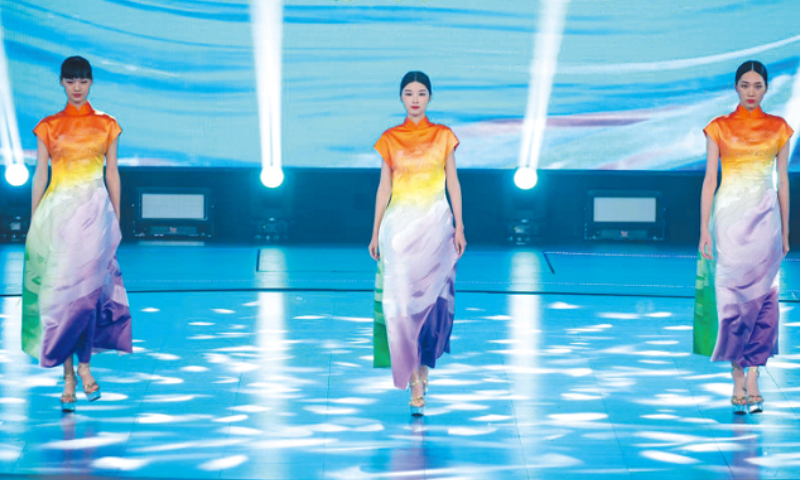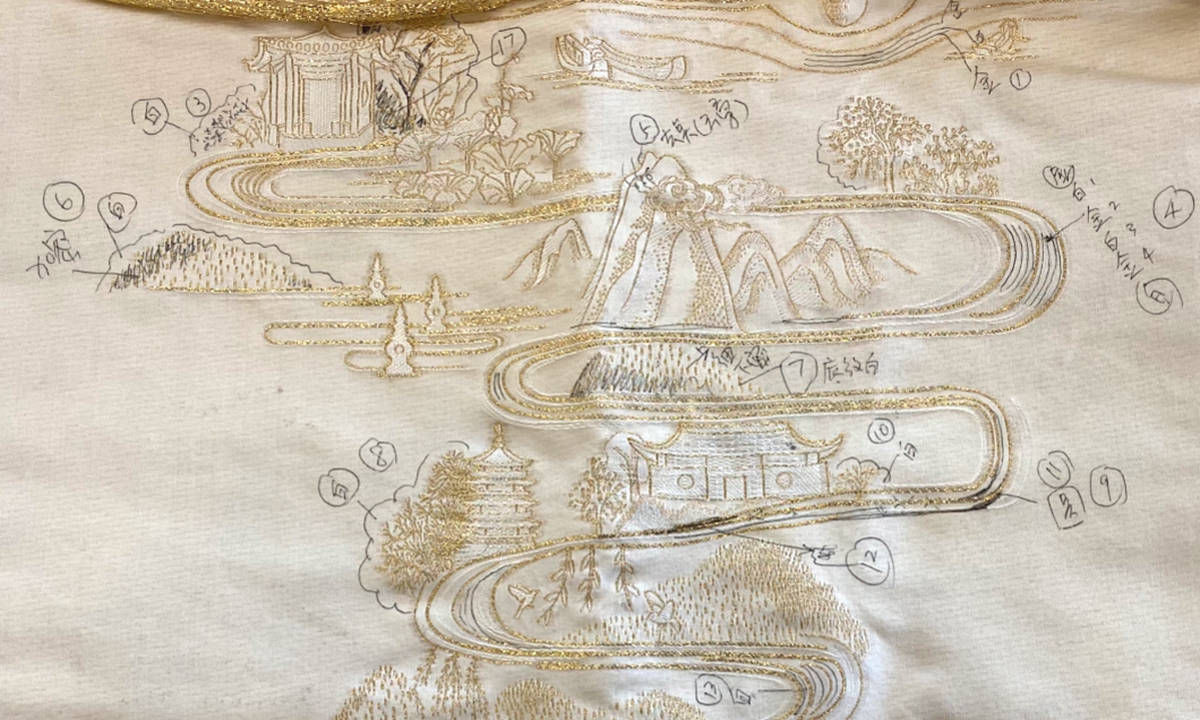ARTS / ART
Fashion designer for Hangzhou 2022 looks into oriental aesthetics representing China's diversity

Photo: hangzhou.com.cn

Manuscript shows the clothing designs for Asian Games Hangzhou 2022, where the designer Wu Haiyan describes it as a combined narrative of "traditional patterns and the Chinese aesthetic." Photo: Courtesy of Wu Haiyan
As one of the pioneer designers, with decades of experience and dedication to incorporate Chinese elements into her designs and raise them to a world stage, Wu Haiyan's goal is simple and straightforward: she is looking into a systematic study of Oriental designs in silk.
Wu Haiyan, who just retired from the China Academy of Art (CAA), joined the Global Times at her home in Hangzhou, East China's Zhejiang Province, to talk about her designs for the medal ceremony outfits of the upcoming Asian Games.
For Wu, the designs for Asian Games Hangzhou 2022 are a combined narrative of "traditional patterns and the Chinese aesthetic."
By intertwining the laurel yellow and lake green as basic colors, Wu inked the famous southern China's Jiangnan landscape over her new design.
After two years and nine preliminary designs, she nailed down the final version with her CAA team for the Hangzhou Asian Games and Asian Para Games in September, 2022.
On the top half of the dress portraits a vast landscape view of West Lake with nature and historic relics depicted by simple lines. The curved lines on the lower half represent the Qiantang, one of the most famous rivers south of the Yangtze which links the important commercial artery in Southern China and has the world's largest tidal bore.
Silk as symbol
As for materials, Wu and her team chose silk, a representative fabric of the region, made with a technique that archaeologists estimate to have been developed over 6,000 years ago in China when people started raising silkworms, collecting silk and weaving cloth.
Since the Western Han Dynasty (206 BC - AD 25), China exported silk through the ancient Silk Road, where it became a symbol of the Eastern civilization and built a bridge between the East and West.
With the idea of passing down this legacy, Wu decided to use silk on her designs for Hangzhou 2022.
"I always go out [to international events] wearing Chinese silk, with the memory of China's past agricultural era, just to arouse everyone's love for their own oriental silk. The Silk Road first went international by making friends," Wu told the Global Times.
With such appreciation of silk, it is the main subject she will promote to the world and can be seen in other of her designs and fashion shows.
First batch in history
Wu Haiyan is among first promotions of students majoring in China's fashion design.
When she was admitted to the Zhejiang Academy of Art (current CAA) in 1980, she did not expect that she would become a pivotal figure in the Chinese fashion industry.
Wu joined a field research project in Dunhuang, Northwest China's Gansu Province, where the astonishing Mogao Caves are located. There, she was astonished by the exquisite murals and the lifelike painted sculptures and decided to reflect this beauty on her designs.
The 64-year-old designer, who has won several awards over past decades, was one of the designers of the uniforms worn by Beijing Olympic athletes in 2008, Shanghai World Expo volunteers in 2010, and the Hangzhou G20 summit volunteers in 2016.
In her countless designs, one fashion show inspired on silk in 2001 held in an abandoned electronics factory in Northwest Beijing created a precedent for fashion designs that combine Chinese tradition and modernity. Since then, this abandoned factory attracted the attention of people in international and domestic fashion art circles, and quickly became the famous "798" art community in today's Beijing.
Wu, believes in the importance of "a sense of national feeling for people."
The charm of this business lies in the fact that "it is based on the lifestyle and aesthetics of the people in a society, and by focusing on Chinese elements from a pattern to a specific material, the soul of Chinese classical culture can be evoked," she mentioned.
Wu came up with her own theory of Oriental designs when she worked as professor at the CAA after comparing the aesthetic differences between the East and the West.
Having traveled to European fashion exhibitions and shows, she also noticed a change in the past few decades. There are more opportunities for Chinese designers and products to communicate internationally.
"After looking back at the East from the West, and then look at the West from the East, I deeply feel that Chinese culture can be truly understood and be transformed into a way of life, only if we understand it and make full use of it. That is the responsibility of our generations after generations," added Wu.
